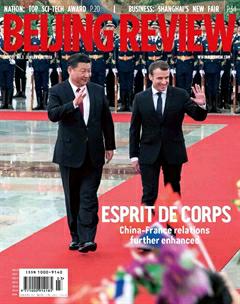What to Expect in 2018?
Despite some turbulence over the course of the year, Chinas economy ended 2017 stronger than expected; headline growth was on track to meet targets, fi nancial risks were contained, the property market cooled, and key reforms made steady progress.
So far, the worlds second largest economy has proven to be a key engine for global growth. The question now is whether China can continue to build this role, and how can the country navigate troubled waters that inevitably lie ahead? The following are some key areas to watch.
Chinas wide-ranging structural reforms, designed to improve the supply side of the economy, produced their desired outcomes in 2017 and are expected to continue with more of the same in 2018.
In the battle against overcapacity, a major charge of the reforms, China accomplished plans to slash steel production by around 50 million tons and coal by at least 150 million tons in 2017.
Progress was also reported on another four important fronts—deleveraging, destocking, lowering costs and strengthening areas of weakness.
The annual Central Economic Work Conference in December 2017 pledged to press ahead with supply-side structural reform in 2018, furthering efforts to improve economic quality.
In what has been dubbed in some quarters as the “toughest year” for Chinas fi nancial industry, 2017 saw authorities take real steps toward curbing widespread malfeasance in the rapidly expanding financial market.
Banks, insurers and securities companies have been issued heavy fines for the flouting of market rules, and the Internet fi nance companies that once prospered from easy profits are struggling to survive under the tightened regulations.
This hardline stance is set to continue as senior leaders have agreed to remain resolute in the crackdown on irregular and illegal activities in the fi nancial sector as part of efforts to forestall risks.
Although a statement released after the Central Economic Work Conference made no specific mention of deleveraging, financial risk control is still a priority given that defusing major risks is one of the three tough battles that the country has vowed to fi ght in the coming year.
Regarding another of these major battles, there is no better gauge than the ubiquitous, clear, blue skies of Beijing this winter to demonstrate the effectiveness of Chinas anti-pollution drive.
Once a rarity, blue winter skies are no longer a luxury in Beijing due to a government campaign to increase the use of clean fuel for heating, and impose tough punishments for polluting enterprises.endprint
Pollution control efforts are targeting a significant reduction in the emissions of major pollutants and an improvement in the overall ecological environment.
To win this battle, efforts should be focused on adjusting the structure of industries, strengthening energy conservation and making the skies blue again, according to the Central Economic Work Conference.
In 2017, the property market, once deemed a major risk for the broader economy, cooled down amid the implementation of tough controls, such as purchase restrictions and increased downpayment requirements, as the government sought to rein in speculation.
With the market holding steady, Chinese authorities are seeking a long-term mechanism for real estate regulation and a housing system that ensures supply through multiple sources and encourages both housing purchases and rentals.
In large and medium-sized cities, the government will step up the development of a housing rental market, especially longterm leases, while reducing unsold housing remains a priority for the third- and fourthtier cities and counties.
A report from the National Academy of Economic Strategy predicted that the countrys property market will remain stable in 2018 if there is no major policy shake-up.
Reforms of state-owned enterprises(SOEs) will also run deeper in 2018, as the Chinese Government expects them to play a bigger role in leading excess capacity cuts, keeping the debt ratio under control and driving high-quality economic development.
In 2017, up to 68.9 percent of the centrally administered SOEs were involved in mixed-ownership reforms, and authorities are reviewing plans for more to join in the drive.
At the 19th National Congress of the Communist Party of China (CPC), the Chinese leadership pledged to advance reforms to make SOEs “stronger, better and bigger,”transforming them into “world-class, globally competitive fi rms.”
The government will continue to press ahead with stronger restructuring and deleveraging efforts, as well as furthering mixed-ownership experiments at more SOEs, authorities said.
The year 2018 marks the 40th anniversary of Chinas reform and opening-up policy, and Chinese leaders have made assurances that Chinas door to the world will only open wider.
China will increase imports and cut import tariffs on some products to promote balanced trade, according to the Central Economic Work Conference.
To give foreign fi rms greater opportunities in Chinas booming market, a negative list approach to market entry, which lists state sectors and businesses that are off-limits to foreign investment, will be expanded nationwide in 2018.
The country will also grant more power to pilot free trade zones, and explore the opening of free trade ports, according to the 19th CPC National Congress.endprint

